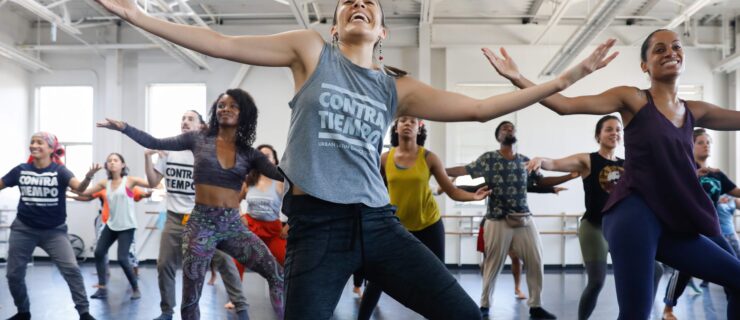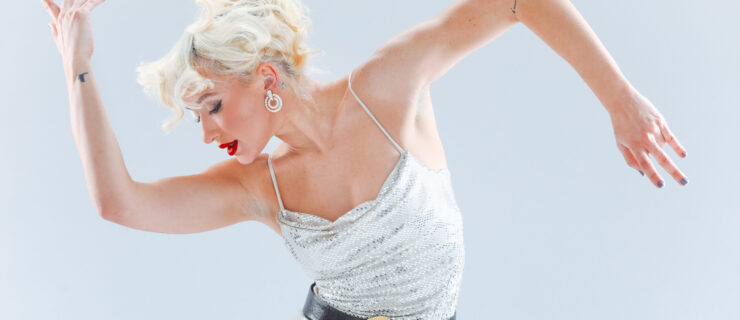Letter from a Ballet Teacher: How My Own Home Isolation as a Teenager Deepened My Love for Dance
As a ballet teacher adjusting to the startling new world we are living in with COVID-19, I keep thinking of my dance students and the worry they must feel adapting to this stressful situation. Being stuck at home can be frustrating and scary, particularly when your ballet studio feels like a second home. I wanted to share my own experience dancing in isolation as a teenager, and what I learned from it. Hopefully my story will help buoy your spirits for the better days ahead.
When I was a senior in high school, a professional ballet career was all I wanted in my life. While training at an intensive ballet program in Virginia, I was so focused on getting a job that when I came down with an illness (chronic mononucleosis), I refused to stop dancing. Unfortunately, this caused me to become even sicker. I eventually had to fly home to Florida, where I was required to rest for several weeks. This period of home isolation felt torturous at the time, but I learned important lessons that later made my professional career much more rewarding.

A New Appreciation for Barre Work
During my first few weeks of recovery I was too weak to dance. Once my health started to improve, I started to give myself barre. Incorporating dancing at home lifted my spirits and gave me hope, and I began to appreciate ballet in a new way. As a young dancer, I loved center and tended to feel barre was tedious. During recovery, I became so grateful for the ritual of barre, and how it can be done almost anywhere under nearly any circumstance. Simply giving myself barre and following the series of prescribed exercises that have been performed for centuries gave me purpose as a dancer. Although I was alone, it felt as if I was part of something bigger than myself. I know of dancers who have given themselves barre outdoors or even in hospital rooms. During home isolation, barre remains a meaningful way to stay connected to ballet.
Watching More Ballet
During my isolation, I regularly watched videos of ballet performances; it was frequently the high point of my day. Escaping into another world became so therapeutic. It hit me that getting to dance for other people through ballet performances was such an honor and privilege. I realized how amazing it was to work in a field that allowed me to transport people away from their troubles. When I returned to performing, I felt a new sense of purpose. Keep in mind, my only access to ballet performances was through the VHS videos I owned—students today have a wealth of performances to choose from online!

The author as a wili in Orlando Ballet’s production of Giselle
Tanya Schmidt, Courtesy Katie Slattery
Gratitude for the Corps de Ballet
After recovering, I developed a new appreciation for corps work and found group pieces to be so energizing! Students tend to crave solo opportunities, but when I was finally able to return to a group, I realized how amazing the camaraderie and vitality of corps work could be. I took that heightened appreciation and sensitivity into my professional career and it made such a difference. Some of my most nostalgic moments onstage are actually corps de ballet roles—I still recall how alive and connected I felt dancing as a wili in Act II of Giselle.
Healing Time for My Body
Finally, home isolation forced me to take the necessary time to recover and patiently listen to my body. Dancers frequently push through injuries and illness because of their strong desire to dance. Take advantage of the time at home to check in with your body—let your sore knee recover, perform therapeutic exercises to strengthen a weak ankle, or practice performance visualization. Taking time to recover is essential, yet it’s somehow a hard lesson for dancers to learn. But upon returning to the studio, you will be a stronger and wiser dancer for it.
In the end, my period of home isolation helped me appreciate dancing far more than I would have otherwise. It strengthened my love for performance, for team work and for ballet itself. I became a more joyful dancer. Although it was a difficult time I wouldn’t choose to repeat, it taught me valuable lessons that I carried into my professional career. We will get through this time together and arrive on the other side with a deeper appreciation and sensitivity to the art we love. Please keep on dancing!
Katie Slattery is a teacher and outreach/artistic assistant at Orlando Ballet School.




